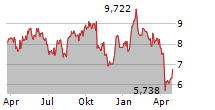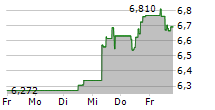
Seven-year research program proves clothes including jeans and T-shirts can last more than 50% longer [1] with gentler wash conditions.
STOCKHOLM, Aug. 20, 2024 /PRNewswire/ -- New research, published today in the fourth edition of The Truth About Laundry report, proves that choosing lower temperatures and shorter cycles, can lengthen the lifespan of clothes by more than 50%. Conducted by Electrolux Group, a leading home appliance company in sustainability, the study is part of a seven-year, science-led research program focused on extending clothing life.
Through extensive laboratory testing, different washing methods were tested on various fabrics, selected to represent common clothing types including denim jeans and cotton T-shirts. Color degradation was regularly monitored and over 600 panelists determined the point at which clothes would be disposed of.
The outcome is a new metric, the Electrolux Care Index, a new methodology that can measure the impact of different washing treatments on the durability of clothes. For example, a cotton T-shirt washed at 30°C for 59 minutes will last over 50% longer than when it's washed on a regular 40°C cycle, which can last up to 120 minutes. The outcome was similar for denim jeans.
"In 2021, we published a Life Cycle Assessment (LCA) study on Electrolux machines that revealed a 20-25% reduction in Global Warming Potential by shifting from 40°C to 30°C washes," says the study's lead, Elisa Stabon (M. Sc Chemistry) Head of Product Experience, Product Line Care, Electrolux Group. "We have now gone further with this new research. To reduce the significant environmental footprint of clothing, we need to keep garments in use for longer. The two simplest ways of achieving that are to firstly, wear clothes more times in between washes and, secondly, wash them in gentler conditions. Namely, lower temperatures and shorter cycles."
These results could be significant. The substantial environmental impact of the fashion industry has been widely reported. It is responsible for more annual greenhouse gas emissions than all international flights and maritime shipping combined [2] and contributes to 10% of global carbon emissions [3].
But it's in the home that Electrolux Group's new study could have the biggest implications. The average European [4] throws away over 6.5kg [5] of clothes [6] each year, 87% of which are either incinerated or end up in landfill [7] It's the equivalent of nearly 13.5 tons of clothes being discarded every day, long before the majority needs to be [8]. According to WRAP, a UK based climate action NGO, extending clothing life presents the single largest opportunity to reduce the carbon, water and waste footprints of clothes [9].
According to data from its fourth edition of The Truth about Laundry 2024, encouraging people to choose gentler washing programs continues to be a challenge. The study, which has been surveying up to 14,000 people across fourteen European countries since 2020, highlights most households continue to wash at higher temperatures even though millions of households have experienced laundry blunders:
- 59% of households across Europe claim to wash their clothes mainly at 40°C and above.
- Only 12% of Europeans think that cycle duration has an impact on clothing life when it can have a substantial influence.
- Two thirds (66%) of Europeans have experienced that sinking feeling of opening the appliance to find an item of clothing shrunk or misshapen.
- Nearly three quarters (74%) have also experienced color fading.
- Nearly 8 in 10 Europeans (79%) acknowledged that laundry blunders were a result of their own actions. The most common reason cited was the temperature being too high.
The reasons behind Europe's persistent relationship with higher wash temperatures appear varied and complex. On one hand, the majority of people are happy with the results when they wash at 30°C with only 12% claiming their washing did not clean as well as expected. On the other hand, when asked what stops them from washing at 30°C more often, more than a third (34%) reported not being confident it would remove stains. Tellingly, the second most popular reason cited for not lowering the temperature was due to habit.
The report suggests that habit may be a major reason consumers remain committed to a 40°C wash cycle. Electrolux Group's own data indicates that the 40°C cottons setting is the most frequently used on washing machines, with cycle durations typically ranging from 90 to 120 minutes. Ideally, appliances should default to the lowest optimal setting. For instance, over 70% of programs in three of Electrolux's latest ranges default to 30°C or 20°C.
Although newer appliances allow consumers to adjust default settings, the research reveals a reluctance and a knowledge gap. Nearly 74% of Europeans stick to the default wash temperature, and almost 30% are unaware they can change it. Similarly, 78% of users adhere to the default cycle duration, with 35% not knowing it can be adjusted. The Electrolux Care Index indicates that temperature and cycle duration significantly influence clothing longevity. Generally, cooler and shorter washes help extend the life of garments.
"Our relationship with clothing goes beyond mere practicality; it encompasses environmental stewardship and responsible consumption," says Sarah Schaefer, VP Sustainability Europe and APMEA at Electrolux Group. "By adopting mindful laundry practices - such as lowering temperatures, shortening cycle duration and reducing detergent usage - we can drastically lessen the carbon footprint of our clothing care routines. Through this lens, laundry becomes not just a chore but an act of mindfulness - a way to honor the resources that went into making our clothes and the planet that sustains us."
To extend clothing life and reduce its environmental impact, Electrolux Group recommends the following five steps.
Step 1: Think. BEFORE. Wash
Common laundry blunders like shrinkage, color run, and fading lead to millions of clothes being incinerated or landfilled prematurely. Most can be avoided by choosing the right settings. For easier laundry, choose appliances with features like Electrolux's UltraQuick 59 min function, which completely removes over 50 common stains at 30°C [10] in under an hour and can save up to 30% energy [11].
Step 2: Be smart(er) with technology
Most people are missing out on their appliance's capabilities. Less than half (46%) rarely consult the instructions and 22% never do. Understanding the appliance can lead to better choices but reading instructions isn't for everyone. For those households, appliances with smarter technology might be the solution. For example, Electrolux SmartSelect feature simplifies the process, guiding users to save time, energy, and water effortlessly. With just one click, it can save up to 80% of energy, 50% of time, and 20% of water [12].
Step 3: Default to 30°C
With most consumers sticking to defaults, it's important to check what the default settings are. Most can be changed making it easy to lower the temperature to 30°C which is suitable for most washes. For new appliances, choose ones where the defaults are already better for clothes. Across three of its newest ranges, for example, Electrolux has set the defaults of 70% of its programs to 30°C or 20°C.
Step 4: Reduce time
As the Electrolux Care Index reveals, shorter cycles can extend clothing life - yet only 12% of Europeans know this. They also reduce energy consumption, a concern for 77%. Being mindful to reduce the default time settings is a step households can instantly take. Or when choosing a new appliance go for one that can take the effort out of decision making. Electrolux new UltraQuick program removes over 50 common stains at lower temperatures and can save up to 30% energy [13].
Step 5: Read. Wear. Refresh.
Always consult the care label and remember that the wash temperature indicated is the maximum, not the recommended. Frequent washing wears out clothes and increases the chance of laundry mishaps. Lots of clothes including jeans, T-shirts and tops can be worn more between washes. Often, just airing clothes after wearing and treating stains separately with a damp cloth and mild detergent can suffice. Another option, when choosing a new appliance, is to consider one that has a steam function. Electrolux SteamRefresh program refreshes clothes in 25 minutes and uses up to 96% less water than washing [14]. Steam also helps reduces wrinkles [15] and odors [16].
NOTES TO EDITORS
About the report - The Truth About Laundry
Electrolux has been producing and sharing The Truth about Laundry since 2021. The findings in this latest study are based on quantitative data collected from 14,000 adults across fourteen European markets. OnePoll, a survey-led market research company - managed the research in collaboration with Electrolux and its partners. The survey was fielded between 28th November 2023 to 3rd January 2024 with data collected in the following countries: Belgium, Denmark, Finland, France, Germany, Italy, the Netherlands, Norway, Poland, Portugal, Spain, Sweden, Switzerland, and the UK; general population, 1000 per country. While the data is mainly from EU countries, due to the size and scale of the research, and to maintain consistency with previous years, we have applied the findings to Europe.
The data was weighted for each country to ensure accurate representation by age, marital status, income/social class, ethnicity, and religion. For a statistic of 50% the margin of error for sampling on a sample of 1000 respondents is ±3.1%. For smaller or larger statistics, the margin of error will decrease and falls to 1.9% for a statistic of 10% or 90%. This is based on all countries having 1000 respondents per market. This margin of error is small making the data highly reliable.
References
[1] Based on a 59-minute cycle at 30°C
[2] Ellen MacArthur Foundation, A new textiles economy: redesigning fashion's future (2017)
[3] Textiles and the environment: the role of design in Europe's circular economy - European Environment Agency (europa.eu)
[4] EU Monitor, The impact of textile production and waste on the environment
[5] Wood Mackenzie presentation, Product developments in manmade fibres: Is cotton able to compete? (2016)
[6] Excluding footwear
[7] https://www.ellenmacarthurfoundation.org/a-new-textiles-economy
[8] Fashion Revolution
[9] WRAP, Design-extending-clothing-life
[10] Based on external test of stain removal on 50 common household stains using UltraQuick 30°C?program with 5kg load
[11] Based on internal test comparing energy consumption of the 40°C cotton program with the 59 min 30°C?UltraQuick program
[12] Based on internal test comparing energy, time and water consumption of SmartSelect Normal setting Cotton 40° with SmartSelect Extra Light setting Cotton 20° on a 4kg cotton load.
[13] Based on internal test comparing energy consumption of the 40°C cotton program with the 39 min 30°C?UltraQuick program
[14] Internal test with a 1 kg load on the steam program vs the delicates program
[15] Based on Internal test comparing the number of wrinkles on 100% woven cotton fabric before and after a SteamRefresh cycle
[16] Based on external test comparing cigarette smoke odor in 100% cotton fabric before and after the SteamRefresh cycle
This information was brought to you by Cision http://news.cision.com
https://news.cision.com/electrolux-group/r/new-electrolux-group-study-shows-short-wash-and-low-temperature-key-to-reducing-environmental-footpr,c4026060
The following files are available for download:
https://mb.cision.com/Main/1853/4026060/2951187.pdf | The Truth About Laundry 2024 |
https://news.cision.com/electrolux-group/i/truth-about-laundry-2024-image,c3325445 | Truth About Laundry 2024_image |
https://news.cision.com/electrolux-group/i/sarah-schaefer--vp-sustainability-europe--electrolux-group,c3325446 | Sarah Schaefer, VP Sustainability Europe, Electrolux Group |
https://news.cision.com/electrolux-group/i/elisa-stabon--head-of-product-experience--product-line-care--electrolux-group,c3325447 | Elisa Stabon, Head of Product Experience, Product Line Care, Electrolux Group |
![]() View original content:https://www.prnewswire.co.uk/news-releases/new-electrolux-group-study-shows-short-wash-and-low-temperature-key-to-reducing-environmental-footprint-of-clothes-302226168.html
View original content:https://www.prnewswire.co.uk/news-releases/new-electrolux-group-study-shows-short-wash-and-low-temperature-key-to-reducing-environmental-footprint-of-clothes-302226168.html





